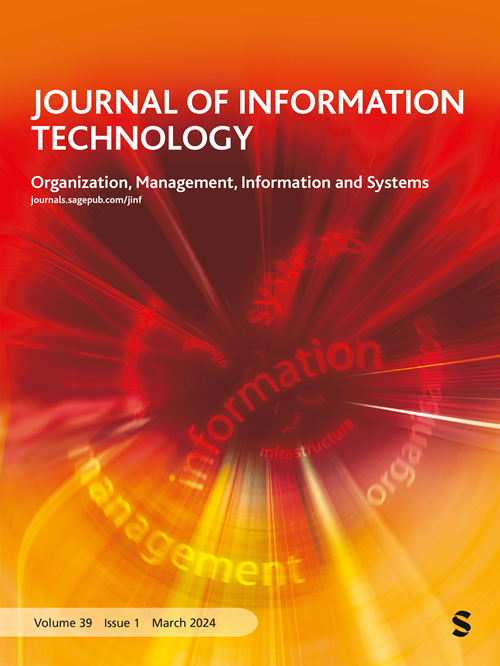在数字化转型中实现利益相关者的一致:框架转型视角
IF 5.4
3区 管理学
Q1 COMPUTER SCIENCE, INFORMATION SYSTEMS
引用次数: 0
摘要
数字化转型(DT)为企业提供了运营和战略创新的机会,从而提高效率并带来变革。然而,要成功实施 DT 计划,需要观点、动机和能力各不相同的利益相关者之间的协作。本研究探讨了利益相关者如何构建 DT 流程,以实现一致性并实施 DT 计划。借鉴框架和框架调整机制的概念,本研究探讨了利益相关者如何通过框架调整机制战略性地影响彼此的解释。本研究对澳大利亚某市议会的一项全议会范围的 DT 计划进行了案例研究,以分析利益相关者的战略协调努力。研究结果揭示了利益相关者对 DT 流程的不同解释,以及通过规划、实施和沟通框架的框架转换来调整各种解释的战略努力。根据研究结果,提出了在 DT 计划中实现协调的过程模型,该模型捕捉到了框架及其相互作用的动态性质。这项研究有助于人们了解 DT 计划中的利益相关者动态和战略框架。本文章由计算机程序翻译,如有差异,请以英文原文为准。
Achieving Stakeholder Alignment in Digital Transformation: A Frame Transformation Perspective
Digital transformation (DT) offers organizations the opportunity for operational and strategic innovation, leading to increased efficiencies and transformative changes. However, successfully implementing DT initiatives requires collaboration among diverse stakeholders with varying perspectives, motivations, and capabilities. This study explores how stakeholders frame the DT process to achieve alignment and implement DT initiatives. Drawing upon the concepts of frames and frame alignment mechanisms, the study examines how stakeholders strategically influence each other’s interpretations through frame alignment mechanisms. A case study of a council-wide DT initiative in an Australian city council was conducted to analyze stakeholders' strategic alignment efforts. The findings reveal differing interpretations of the DT process among stakeholders and the strategic efforts to align the various interpretations through a frame transformation of planning, implementation, and communication frames. Based on the findings, a process model for achieving alignment in DT initiatives is proposed, capturing the dynamic nature of frames and their interactions. This study contributes to the understanding of stakeholder dynamics and strategic framing in the context of DT initiatives.
求助全文
通过发布文献求助,成功后即可免费获取论文全文。
去求助
来源期刊

Journal of Information Technology
工程技术-计算机:信息系统
CiteScore
10.00
自引率
1.80%
发文量
19
审稿时长
>12 weeks
期刊介绍:
The aim of the Journal of Information Technology (JIT) is to provide academically robust papers, research, critical reviews and opinions on the organisational, social and management issues associated with significant information-based technologies. It is designed to be read by academics, scholars, advanced students, reflective practitioners, and those seeking an update on current experience and future prospects in relation to contemporary information and communications technology themes.
JIT focuses on new research addressing technology and the management of IT, including strategy, change, infrastructure, human resources, sourcing, system development and implementation, communications, technology developments, technology futures, national policies and standards. It also publishes articles that advance our understanding and application of research approaches and methods.
 求助内容:
求助内容: 应助结果提醒方式:
应助结果提醒方式:


